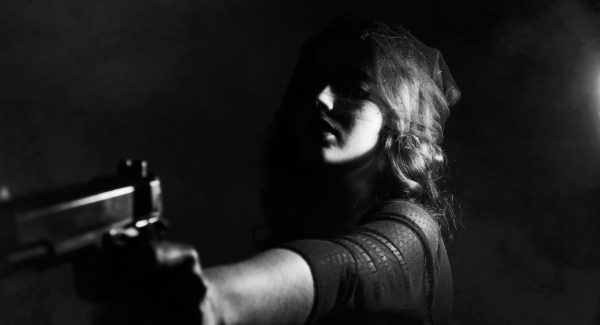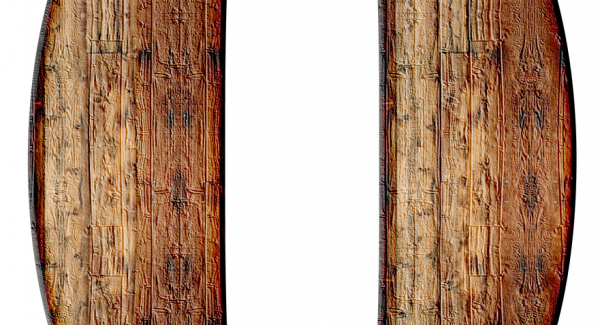For some people, looking at one or more of the numbers in the image will be an aesthetically unpleasant experience. “But zero is black!” they will think to themselves. Those with black (or red, or upper left, or shy, or any other type of additional sensation) zeroes are synaesthetes – for them, the perception of a stimulus (the inducer) in one sense will activate a sensation (the concurrent) in a second sense, or a different aspect of the same sense.
About one in 23 people (Simner et al., 2006) has one or more forms of synaesthesia. However, apart from a brief period of interest in the late eighteenth and early nineteenth centuries (Larner, 2006) which faded out with the rise of behaviorism, synaesthesia remained an intriguing oddity, until in 1980 neurologist Richard Cytowic heard an acquaintance utter the words, “There aren’t enough points on the chicken” (Cytowic, 1993). Cytowic’s investigations into the perceptions of two people with synaesthesia marked the beginning of modern research into the fantastic realm of colored music and flavoured words.
The biggest problem in synaesthesia research, and also the reason that it was sidestepped during the behaviorist era, is that it is a totally subjective phenomenon. For non-synaesthetes, it is amazing that anyone could find the name Barbara to taste of rhubarb, or a bird call to look like blue spots. Equally, for synaesthetes it is amazing that anyone wouldn’t have these sensations. Some synaesthetes don’t discover that their sensations are unusual for decades, and even those who discuss it with their families are likely to find no dissent as synaesthesia is at least partially heritable (Ward et al., 2005).
The subjectivity of synaesthesia has occasionally led to suggestions that it is not real – subjects might be confabulating, over-extending metaphors, or abusing psychoactive drugs (Ramachandran & Hubbard, 2001). Fortunately, synaesthetes are very consistent in their inducer-concurrent pairings (e.g. Smilek et al., 2006) – much more so than non-synaesthetes asked to remember similar associations, or using psychoactive drugs – and this has formed the main basis of investigations into the phenomenon.
Colored graphemes are one of the most common forms of synaesthesia, and the most extensively investigated. Research has revealed many subtypes, even among this group. Dixon et al. (2004) suggested that among synaesthetes with a visual concurrent, there are those who literally see their concurrents (projectors) and those who view them in their mind’s eye (associators). There is also a distinction between higher and lower synaesthetes - in higher synaesthetes the concept of an inducer is what drives the concurrent to appear, while in lower synaesthetes it is the physical appearance of the inducer (Ramachandran & Hubbard, 2001). This second division means that for some synaesthetes, only an Arabic numeral (e.g. 5) will produce a concurrent color, while for others, a Roman numeral (e.g. V – in the correct context) will also have this effect.
Making matters more complicated still, color is not the only synaesthetic intrusion into the world of numbers and letters. Some people think of graphemes as having personalities – otherwise known as ordinal linguistic personification, or OLP. For example, Simner and Hubbard’s (2006) subject, AP, thinks of a as a sensible, busy mother, and b as either her husband or her infant son. As these two examples illustrate, letters and numbers often form families or groups of friends – a veritable society of graphemes.
Another form of number-induced synaesthesia, one which the author of this piece has, is visuo-spatial number forms (Sagiv et al., 2006). In this form, numbers have a definite position in space. For example, my concept of zero is somewhere just below and to the right of my right shoulder. The idea of abstract forms existing in space extends to days (today is always in front of me, the future marches off to the right), months (June and July are at the top of a shallow, curving bridge) and letters of the alphabet (A, N and U are in a column).
At this point, you may be shaking your head along with the behaviorists and saying, “This is all very interesting, but what use is knowing about synaesthesia?”
There are several answers to this one. The first is probably the most obvious: studying the brain in atypical states can tell us how it functions in its usual state. While synaesthesia is not a mental illness – indeed, most synaesthetes are very happy to have it – it is unusual. In the same way that injury to a specific part of the brain can tell us what goes on in that part, usually by its absence, synaesthesia can tell us what goes on in the areas of the brain that are involved in it. We don’t yet know precisely which areas these are, and they are likely to be different for each form of synaesthesia, but we’re getting there (e.g. Sperling et al., 2006; Rich et al.,2006).
The second explanation is a little less intuitive, and has to do with qualia – irreducible properties of a stimulus, such as redness. For most people, zero has only one quale, its “zeroness”, but for someone with number-color synaesthesia, zero can be just as black as it is zero: the two are not separable. Qualia are mysterious because they are completely private sensations, but synaesthesia offers us a window into their strange world.
There are other uses of synaesthesia research, but (as is appropriate for a social psychology magazine) I have chosen a final use that has social applications. Most people still aren’t aware of synaesthesia, and so it’s frustrating for children who have it to be told that they are lying, or worse, psychotic (Day, 2005). The better synaesthesia is understood, and the more widespread knowledge about it becomes, the lower the chances of this happening. If someone tells you that an insect sting is jagged orange, that a cake smells dome-shaped, or the word “magical” is green, don’t brush their words aside as mere metaphor. They probably have synaesthesia.
References
Cytowic, R.E. (1993). The Man Who Tasted Shapes. Cambridge: MIT Press.
Day, S. (2005). Some Demographic and Socio-cultural Aspects of Synaesthesia. In Robertson, L.C. and Sagiv, N. (Eds) (2005).Synesthesia: Perspectives from Cognitive Neuroscience. Oxford: UP.
Dixon, M.J., Smilek, D. and Merikle, P.M. (2004). Not all synaesthetes are created equal: Projector versus associator synaesthetes. Cognitive, Affective and Behavioural Neuroscience, 4, 335-343.
Larner, A.J. (2006). A Possible Account of Synaesthesia Dating from the Seventeenth Century. Journal of the History of the Neurosciences, 15, 245-249.
Ramachandran, V.S. and Hubbard, E.M. (2001b). Synaesthesia – A Window Into Perception, Thought and Language. Journal of Consciousness Studies, 8, 3-34.
Rich, A.N., Williams, M.A., Puce, A., Syngeniotis, A., Howard, M.A., McGlone, F. and Mattingley, J.B. (2006). Neural correlates of imagined and synaesthetic colours. Neuropsychologia, 44, 2918-2925.
Sagiv, N., Simner, J., Colins, J., Butterworth, B. and Ward, J. (2006). What is the Relationship between Synaesthesia and Visuo-Spatial Number Forms? Cognition, 101, 114-128.
Simner, J. and Hubbard, E.M. (2006). Variants of synesthesia interact in cognitive tasks: Evidence for implicit associations and late connectivity in cross-talk theories. Neuroscience, 143, 805-814.
Simner, J., Mulvenna, C., Sagiv, N., Tsakanikos, E., Witherby, S.A., Fraser, C., Scott, K., and Ward, J. (2006). Synaesthesia: The prevalence of atypical cross-modal experiences. Perception, 35, 1024-1033.>br>
Smilek, D., Callejas, A., Dixon, M.J. and Merikle, P.M. (2006). Ovals of time: Time-space associations in synaesthesia.Consciousness and Cognition, doi:10.1016/j.concog.2006.06.013.
Sperling, J.M., Prvulovic, D., Linden, D.E.J., Singer, W. and Stirn, A. (2006). Neuronal correlates of colour-graphemic synaesthesia: A fMRI study. Cortex, 42, 295-303.
Ward, J., Li, R., Salih, S. and Sagiv, N. (2006). Varieties of grapheme-colour synaesthesia: A new theory of phenomenological and behavioural differences. Consciousness and Cognition, doi:10.1016/j.concog.2006.09.012.
Ward, J., Simner, J. and Auyeung, V. (2005). A comparison of lexical-gustatory and grapheme-colour synaesthesia. Cognitive Neurospychology, 22, 28-41.




